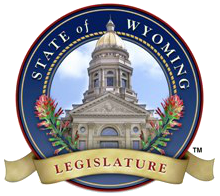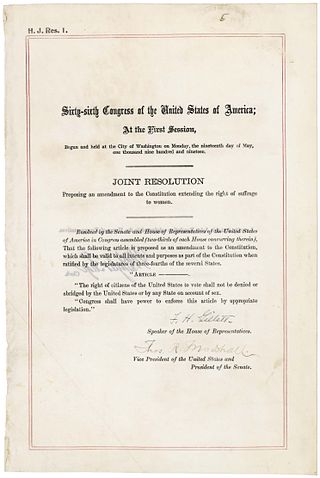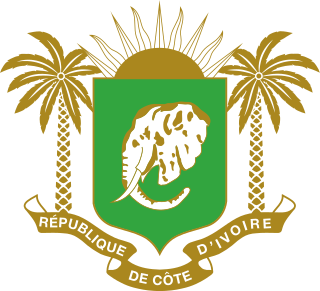Related Research Articles

The Nineteenth Amendment to the United States Constitution prohibits the United States and its states from denying the right to vote to citizens of the United States on the basis of sex, in effect recognizing the right of women to vote. The amendment was the culmination of a decades-long movement for women's suffrage in the United States, at both the state and national levels, and was part of the worldwide movement towards women's suffrage and part of the wider women's rights movement. The first women's suffrage amendment was introduced in Congress in 1878. However, a suffrage amendment did not pass the House of Representatives until May 21, 1919, which was quickly followed by the Senate, on June 4, 1919. It was then submitted to the states for ratification, achieving the requisite 36 ratifications to secure adoption, and thereby go into effect, on August 18, 1920. The Nineteenth Amendment's adoption was certified on August 26, 1920.

Wyoming is a landlocked state in the Mountain West subregion of the Western United States. It borders Montana to the north and northwest, South Dakota and Nebraska to the east, Idaho to the west, Utah to the southwest, and Colorado to the south. With a population of 576,851 in 2020, Wyoming is the least populous state despite being the 10th largest by area, with the second-lowest population density after Alaska. The state capital and most populous city is Cheyenne, which had a population of 65,132 in 2020.

The Equal Rights Amendment (ERA) is a proposed amendment to the U.S. Constitution that would, if added, explicitly prohibit sex discrimination. It was written by Alice Paul and Crystal Eastman and introduced in Congress in December 1923 as a proposed amendment to the United States Constitution. The purpose of the ERA is to guarantee equal legal rights for all American citizens regardless of sex. Proponents assert it would end legal distinctions between men and women in matters of divorce, property, employment, and other matters. Opponents originally argued it would remove protections that women needed. In the 21st century, opponents argue it is no longer needed and some fear it would be extended to abortion and transgender rights.
Women's suffrage is the right of women to vote in elections. At the beginning of the 18th century, some people sought to change voting laws to allow women to vote. Liberal political parties would go on to grant women the right to vote, increasing the number of those parties' potential constituencies. National and international organizations formed to coordinate efforts towards women voting, especially the International Woman Suffrage Alliance.

The Washington State Legislature is the state legislature of the U.S. state of Washington. It is a bicameral body, composed of the lower Washington House of Representatives, composed of 98 Representatives, and the upper Washington State Senate, with 49 Senators plus the Lieutenant Governor acting as president. The state is divided into 49 legislative districts, each of which elect one senator and two representatives.
The Wyandotte Constitution is the constitution of the U.S. state of Kansas.

Women's suffrage – the right of women to vote – has been achieved at various times in countries throughout the world. In many nations, women's suffrage was granted before universal suffrage, in which cases women and men from certain socioeconomic classes or races were still unable to vote. Some countries granted suffrage to both sexes at the same time. This timeline lists years when women's suffrage was enacted. Some countries are listed more than once, as the right was extended to more women according to age, land ownership, etc. In many cases, the first voting took place in a subsequent year.

The Wyoming State Legislature is the legislative branch of the U.S. State of Wyoming. It is a bicameral state legislature, consisting of a 62-member Wyoming House of Representatives, and a 31-member Wyoming Senate. The legislature meets at the Wyoming State Capitol in Cheyenne. There are no term limits for either chamber.
The Constitution of the State of Wisconsin is the governing document of the U.S. State of Wisconsin. It establishes the structure and function of state government, describes the state boundaries, and declares the rights of state citizens. The Wisconsin Constitution was written at a constitutional convention held in Madison, Wisconsin, in December 1847 and approved by the citizens of Wisconsin Territory in a referendum held in March 1848. Wisconsin was admitted to the United States on May 29, 1848. Although it has been amended over a hundred times, the original constitution ratified in 1848 is still in use. This makes the Wisconsin Constitution the oldest U.S. state constitution outside of New England. Only Massachusetts, New Hampshire, Vermont, Maine, and Rhode Island use older constitutions.
A plebiscite was held in the Philippines on April 30, 1937, to decide whether or not women could vote. Multiple women's movements started in 1910, which led to the plebiscite in 1937, where women voted for or against women's suffrage rights. Filipino women worked hard to mobilize and fight for women's suffrage in the early 1900s and gained victory after 447,725 out of 500,000 votes affirmed women's right to vote.

Virginia Louisa Minor was an American women's suffrage activist. She is best remembered as the plaintiff in Minor v. Happersett, an 1875 United States Supreme Court case in which Minor unsuccessfully argued that the Fourteenth Amendment to the United States Constitution gave women the right to vote.

Women's Equality Day is celebrated in the United States on August 26 to commemorate the 1920 adoption of the Nineteenth Amendment to the United States Constitution, which prohibits the states and the federal government from denying the right to vote to citizens of the United States on the basis of sex. It was first celebrated in 1971, designated by Congress in 1973, and is proclaimed each year by the United States President.

The Constitution of Ivory Coast was approved by referendum on October 30, 2016, and officially adopted on November 8, 2016.

Proposition 4 of 1911 was an amendment of the Constitution of California that granted women the right to vote in the state for the first time. Senate Constitutional Amendment No. 8 was sponsored by Republican State Senator Charles W. Bell from Pasadena, California. It was adopted by the California State Legislature and approved by voters in a referendum held as part of a special election on October 10, 1911.

Emma Smith DeVoe was an American women suffragist in the early twentieth century, changing the face of politics for both women and men alike. When she died, the Tacoma News Tribune called her Washington state's "Mother of Women's Suffrage".
This timeline highlights milestones in women's suffrage in the United States, particularly the right of women to vote in elections at federal and state levels.

Women's suffrage was established in the United States on a full or partial basis by various towns, counties, states, and territories during the latter decades of the 19th century and early part of the 20th century. As women received the right to vote in some places, they began running for public office and gaining positions as school board members, county clerks, state legislators, judges, and, in the case of Jeannette Rankin, as a member of Congress.

Wyoming was the first place in the world to incorporate women's suffrage, although other jurisdictions had already given limited suffrage to women who met various property qualifications. A U.S. territory in 1869, Wyoming's first territorial legislature voted to give women the right to vote and to hold public office. A legislature made entirely of men passed the woman's suffrage bill in 1869 entitled "An Act to Grant to the Women of Wyoming Territory the Right of Suffrage, and to Hold Office.” The territory retained its woman suffrage law even when that law could have jeopardized the Wyoming Territory's application for statehood. In 1890, Wyoming became the first U.S. state allowing its woman citizens to vote.
Under U.S. law, a state requires a constitution. A main order of business for Territorial Kansas was the creation of a constitution, under which Kansas would become a state. Whether it would be a slave state or a free state, allowing or prohibiting slavery, was a national issue, because it would affect voting in the polarized U.S. Senate. Because of tensions over slavery, four quite different constitutions of Kansas were drafted.

Amalia Post was an American suffragist. She had been a leader in the woman suffrage movement for 25 years and was largely instrumental in having the franchise granted women in Wyoming Territory by the 1st Wyoming Territorial Legislature in 1869.
References
- ↑ http://www.history.com/this-day-in-history/wyoming-legislators-write-the-first-state-constitution-to-grant-women-the-vote Wyoming Constitution Gives Women Right To Vote